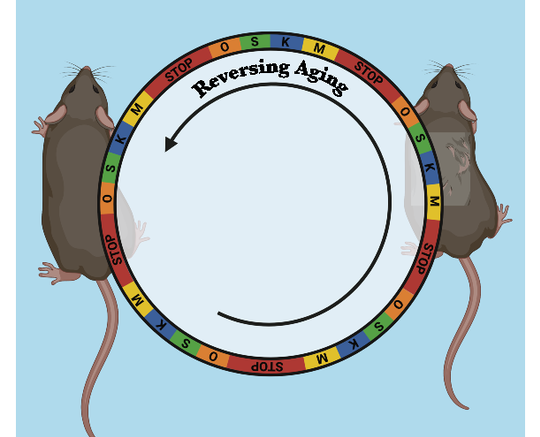It is well known that adding a mixture of four reprogramming molecules (Oct4, Sox2, Klf4 and c-Myc) also known as “Yamanaka factors” to cells can reset epigenetic marks to their original patterns. Partial reprogramming, by expression of reprogramming factors for short periods of time, restores a youthful epigenetic signature to aging cells and extends the life span of a premature aging mouse model. However, the effects of longer-term partial reprogramming in physiologically aging wild-type mice are unknown.
Now, researchers show that long-term partial reprogramming leads to rejuvenating effects in different tissues of mice and at the organismal level. In addition, they show that duration of the treatment determined the extent of the beneficial effects.
This work appears in Nature Aging in the article, “In vivo partial reprogramming alters age-associated molecular changes during physiological aging in mice.”
“We are elated that we can use this approach across the life span to slow down aging in normal animals. The technique is both safe and effective in mice,” says Juan Carlos Izpisua Belmonte, PhD, professor of the Gene Expression Laboratory at the Salk Institute for Biological Studies and an Institute Director at Altos Labs. “In addition to tackling age-related diseases, this approach may provide the biomedical community with a new tool to restore tissue and organismal health by improving cell function and resilience in different disease situations, such as neurodegenerative diseases.”

In this work, Belmonte and colleagues performed various long-term partial reprogramming regimens in healthy animals, including different onset timings, during physiological aging.
“What we really wanted to establish was that using this approach for a longer time span is safe,” says Pradeep Reddy, PhD, a staff scientist at the Salk. “Indeed, we did not see any negative effects on the health, behavior or body weight of these animals.”
One group of mice received regular doses of the Yamanaka factors from the time they were 15 months old until 22 months, approximately equivalent to age 50 through 70 in humans. Another group was treated from 12 through 22 months, approximately age 35 to 70 in humans. And a third group was treated for just one month at age 25 months, similar to age 80 in humans.
Compared to control animals, there were no blood cell alterations or neurological changes in the mice that had received the Yamanaka factors. Moreover, the team found no cancers in any of the groups of animals.
The rejuvenating effects, the authors note, were associated with a reversion of the epigenetic clock and metabolic and transcriptomic changes, including reduced expression of genes involved in the inflammation, senescence and stress response pathways.
When injured, the skin cells of treated animals had a greater ability to proliferate and were less likely to form permanent scars—older animals usually show less skin cell proliferation and more scarring. Moreover, metabolic molecules in the blood of treated animals did not show normal age-related changes.
This youthfulness was observed in the animals treated for seven or 10 months with the Yamanaka factors, but not the animals treated for just one month. What’s more, when the treated animals were analyzed midway through their treatment, the effects were not yet as evident. The authors suggest that partial reprogramming protocols can be designed to be safe and effective in preventing age-related physiological changes.
The team is now planning future research to analyze how specific molecules and genes are changed by long-term treatment with the Yamanaka factors. They are also developing new ways of delivering the factors.
“At the end of the day, we want to bring resilience and function back to older cells so that they are more resistant to stress, injury and disease,” says Reddy. “This study shows that, at least in mice, there’s a path forward to achieving that.”



